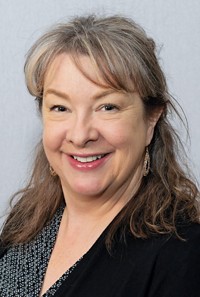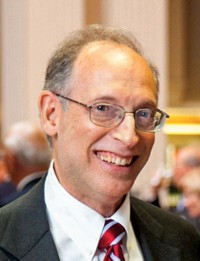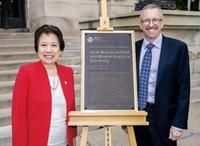Advertisement
Grab your lab coat. Let's get started
Welcome!
Welcome!
Create an account below to get 6 C&EN articles per month, receive newsletters and more - all free.
It seems this is your first time logging in online. Please enter the following information to continue.
As an ACS member you automatically get access to this site. All we need is few more details to create your reading experience.
Not you? Sign in with a different account.
Not you? Sign in with a different account.
ERROR 1
ERROR 1
ERROR 2
ERROR 2
ERROR 2
ERROR 2
ERROR 2
Password and Confirm password must match.
If you have an ACS member number, please enter it here so we can link this account to your membership. (optional)
ERROR 2
ACS values your privacy. By submitting your information, you are gaining access to C&EN and subscribing to our weekly newsletter. We use the information you provide to make your reading experience better, and we will never sell your data to third party members.
Environment
Landmarks Website Goes Interactive
by Janan M. Hayes, Director-at-Large
April 27, 2009
| A version of this story appeared in
Volume 87, Issue 17

What was the first chemical enterprise in the U.S.? How did baking powder come to be? How did we first get potato flakes? Inquiring minds, students, teachers, and chemists want to know the answer to these and other questions about chemistry, chemical products, and processes. But how to ask the questions and where to find the answers are additional questions.
One starting place is the ACS National Historic Chemical Landmarks program. Information on ACS landmarks has been on the Web for many years, but it has been text-heavy and geared to demonstrating the centrality of chemistry. Indeed, one of the criteria for designation is that a landmark must illustrate a significant benefit to society.
That is why the ACS National Historic Chemical Landmarks Committee designates achievements such as DuPont's invention of nylon, the first synthetic fiber; Procter & Gamble's development of Tide, the first synthetic detergent; 3M's introduction of Scotch Tape; and a host of pharmacological discoveries as landmarks. These are common products that demonstrate the importance of chemistry in improving the quality of life. The words on the Landmarks website try to convey this ethos.
But this valuable tool has been somewhat hidden from those who could benefit from it—particularly younger students. This is, after all, the age of Twitter and the 140-character-maximum tweet. One way to attract young students, the committee believes, is to make the site interactive. In 2009, it did just that at www.acs.org/landmarks.
What will you find when you visit? First, a map: Move the cursor over the map of the U.S. and the states pop up. Click on a state colored dark blue, and a list of all the landmarks in that state appears along with their locations. Then, click on a link that takes you to the online brochure for that landmark. Click on a state that is colored light blue, and you will be told there are no landmarks in that state. In addition, there are instructions on how to contact ACS to nominate a landmark and a link to a page on the nomination process with links to nomination forms.
Next, a timeline scrolls across the screen, listing all of the landmarks in chronological order with iconic pictures of the achievement (a can of Rumford baking powder, nylon stockings, rubber tires, a paint can, Scotch Tape, a box of Tide detergent, and so on). Hold the cursor over a picture and the name of the landmark pops up. Click on the picture and you are taken to the online brochure.
The other two interactive items involve play. One is the puzzler. The user can scramble a host of images suggestive of individual landmarks and then solve the resulting jigsaw puzzle. Controls on an onscreen dashboard allow the images to be manipulated in various ways. The other item is a memory game reminiscent of the children's game "Concentration," in which playing cards are spread out, facedown, and each player has to pair the cards. In this case, landmark images have to be paired to reveal the answer to an onscreen question. The images change with each playing of the game.
The map and timeline will be updated every time a new landmark designation occurs. The memory game will be expanded in coming months with new questions. Other games may be added, if the puzzler and memory game prove popular. In addition, PowerPoint presentations are being developed to help educators use the Landmarks website as a potential teaching tool. These tools, which can be used in the classroom and on the lecture circuit, demonstrate the history and science behind each landmark. ACS staff will monitor use over time to see which features are most used, with the intention of making modifications as needed.
Helping educators to use landmarks as a teaching tool is the motive in creating this interactive website. The stories behind each landmark are a powerful teaching tool, especially in college general education courses geared to the nonspecialist and in high school classes. They enable students to see how scientific advances build on previous work.
For example, the landmarks celebrating the pathbreaking work of Joseph Priestley and Antoine Lavoisier describe the iron grip the four Greek elements had on scientific imagination for the past 2,500 years, and at the same time, they show how Lavoisier took Priestley's understanding of phlogiston to the next level. The landmark celebrating Rumford baking powder explores the several-millennia history of bread making through the introduction of sourdoughs, yeasts, and baking soda. The development of Tide built on the work of German chemists who sought new cleaning agents when soap became unavailable during World War I.
The online brochures go further, often exploring the political, historical, and socioeconomic ramifications of the innovations, developments, and discoveries designated as landmarks. These discussions show the effect of scientific advances on society, as well as how societal developments influence scientific inquiry. So, inquiring minds, go to www.acs.org/landmarks and have fun while learning about chemistry in your world.
Views expressed on this page are those of the author and not necessarily those of ACS.





Join the conversation
Contact the reporter
Submit a Letter to the Editor for publication
Engage with us on Twitter